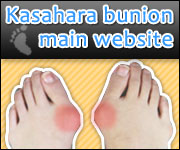Causes of neck pain
Congenital factors, acquired factors and environmental factors account for 30% of a person’s neck pain. (congenital factor(genetic):10%, acquired factor:10%, environmental factor:10%)
※ Environmental factor contains include working posture, mental stress and so on.
However, these three causes are highly unlikely to occur at the same time, and thus, should be considered only 10% of the cause.
The remaining 70% of pain in the neck is deformation caused by imbalanced sole with the deformed bones stimulating the nerves in the head, neck and shoulders, resulting in headache or stiff shoulders with unidentifiable causes.
To support this, sole imbalance symptoms, such as bunion (Hallux Valgus), ungrounded toe and flatfoot, are seen on 90% of the people who complain of those symptoms. With sole imbalance, the gravity point shifts towards the heel and the feet are not able to absorb the shock and torsion waves from the ground. That is to say, those harmful waves are not being made harmless but are transmitted to the neck while walking.
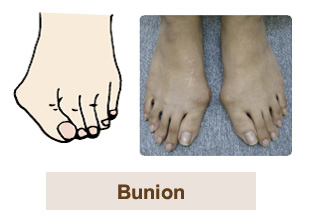
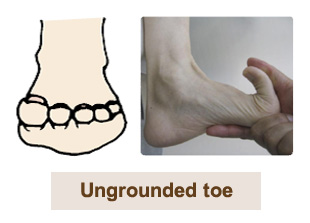
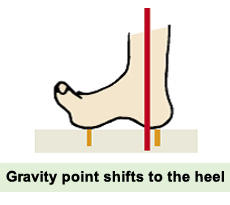
The harmful waves are..
●When the gravity point is at the heel, the ability to absorb the “shock wave” decreases and the wave is transmitted to the neck, resulting in collapse or a fatigue fracture of cervical vertebrae.
●When the gravity point is at the heel, it changes the way of walking between the right and left foot, resulting in imbalance of the upper body. Finally, this “torsion wave” is transmitted, affecting the balance of the neck.
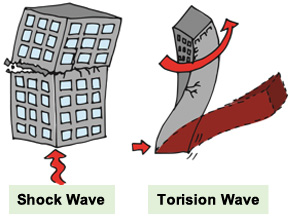
Imbalance of the sole damages the connecting section of the skull and cervical vertebrae, causing malfunction of the autonomic nervous system. The malfunctioning of the autonomic nervous system causes imbalances of various hormones, affects the function of internal organs, and results in illness.
According to Japanese research:
? 80% of female adults have some sort of imbalance of the sole, such as bunions and/or ungrounded toes and flatfeet.
? The incidence of unbalanced soles is rapidly increasing among young children (6-12 years old) and male adults.
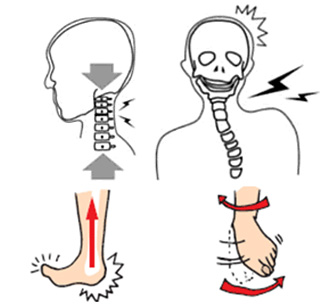
Distorted CV continuously receives shock wave from the ground collided with head weight.
Imbalanced sole prompts twisted walking, resulting in distortion of body.
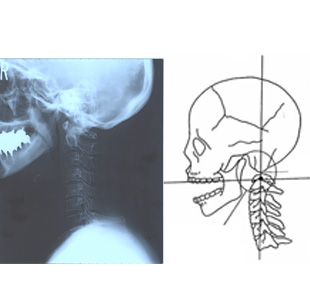
Because the section connecting the first vertebrae and the skull adjusts to balance the imbalance of the feet, a malfunctioning of autonomic nerve system occurs. The autonomic nerve system runs around the vertebrae.
In conclusion, the negative effects of sole imbalance can be seen equally among children and adults, both male and female. Until now, the important relationship between our health and the sole has not been well recognized in society.
Cases of imbalanced sole and related symptoms
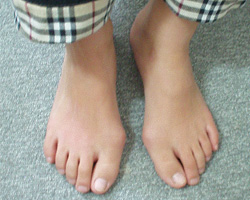
Female Teenager with bunion, suffering from Scoliosis, headache and stiff shoulders
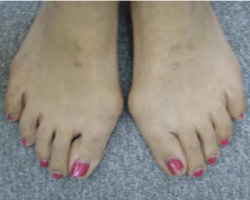
Female Teenager with bunion, suffering from Scoliosis, headache and stiff shoulders
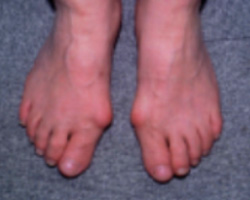
Female Teenager with bunion, suffering from Scoliosis, headache and stiff shoulders
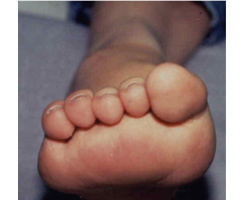
Female Teenager with ungrounded toe, suffering from Spondylolysis Defect (spine slipping)
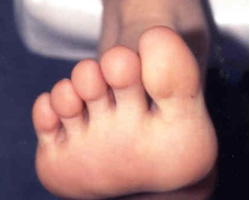
Male 20’s with ungrounded toe, suffering from Spondylolisthesis, headache, and stiff shoulder
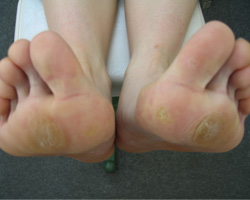
Female 30’s with ungrounded toe, suffering from stiff neck, headache, dizziness, and depression
The relationship between sole imbalance and autonomic imbalance
The imbalance of the sole damages the cervical (neck) vertebrae in the following 5 ways. Damaging the cervical vertebrae causes malfunctions in the autonomic nerve system triggering depression, panic attacks, and other illnesses because the system lies in the connecting sections of the cervical vertebrae and skull.
- 1. The connecting section of the skull and the first cervical vertebrae is located at the top of spine, and thus it is the place that compensates for sole deformations.
- 2. Because the joints in the skull and cervical vertebrae can rotate 360 degrees, they adjust to the imbalances in the sole.
- 3. We tend to control our balance at a higher position such as in the eyes and brain, so the cervical vertebrae is easily strained.
- 4. Due to the change in lifestyle over the past 70 years, with decreased manual labor, the muscles in our neck and shoulders have become weaker and are not strong enough to support our heads.
- 5. Also due to lifestyle changes, we work longer hours and sleep less. Holding our posture vertically for longer periods of time causes strain to the cervical vertebrae.
Thus, bunions, ungrounded toes or flatfeet and neck deformations cause an imbalance in the autonomic nerve system, leading to depression and panic attacks.
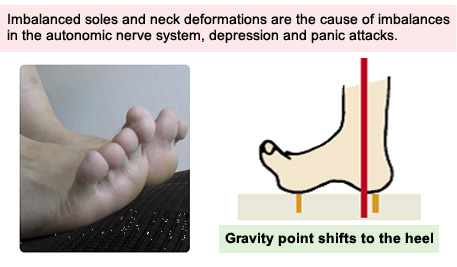
About Autonomic Nervous System
The Autonomic nervous system is made up of the Sympathetic nerve and Parasympathetic nerve. These nerves function automatically in every situation to safely and efficiently maintain our body. The Sympathetic nerve works predominantly during activities while the Parasympathetic nerve works while the body is at rest by adjusting the balance of the transmitter substance. When you are healthy, it is well-balanced. As autonomic nerves are concentrated at the connecting point of skull and cervical vertebrae, when compressed, it causes miscommunication, unbalanced hormones and other symptoms unique to each person.
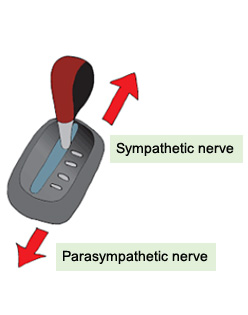
A car is a helpful analogy. Being in healthy condition is like being in “neutral” or “drive”, ready for the next action or danger. When there is a miscommunication, the gear cannot hold neutral or drive, but shifts into “high” (hyperfunction) or into “reverse” (malfunction). As most organs are double innervation, they become hyperfunctioning or malfunctioning which can develop into serious diseases. This is characteristic of autonomic imbalance.
Therefore, in cases of autonomic imbalance, both extremes can be recognized in the same organ: depression and manic state, high and low blood pressure, diarrhea and constipation, bulimia and anorexia… While the relationship between sole balance, neck injury and autonomic imbalance, as mentioned above, appears radical, observations show this connection although it has not yet been statistically shown or reported in medical literature.

